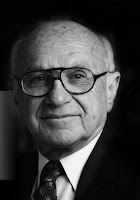NASA launched two one way ticket unmanned spacecraft in 1977 to explore the outer reaches of the universe as well as to tell any possible intelligible live form out there that there are humans on planet Earth. One of the means is via the Golden Record on board Voyager 1 and 2. This record contains many multi-media that best describes what we are like. One section contains 27 pieces of music selected across different, geography, culture and historical time lines. 3 of these pieces were composition by Bach out pacing other famous composers like Beethoven with 2 and Mozart with 1. Well-Tempered Clavier BVW870 played by Glenn Gould was one of them. Hope that satisfies your curiosity but continue to read on.
I was very moved when a old friend of mine whom I first met about 10 years ago invited me over to his place for dinner during the recent Chinese Lunar New Year holidays as it was supposed to be their close knit family affair and I was the only non-family. We had a hearty meal over lively conversations which included dry humor by the host that one of couple he knows has started to make love daily recently. Actually, he was referring to the long running Taiwanese serial called "Love" that the couple has become addicted to and will not miss the daily broadcast for the world. The laughter was not spontaneous as with most dry humor and I shall say that those who laugh first most probably are more witty or has simply heard the joke before.
After dinner, some of us proceeded to the music room which has an impressive collection of mainly classical music on both CDs as well as old world vinyl records that most probably numbers in the thousand. This is why I call it chicken soup for the soul as good music and company is equivalent to what food is to our stomach. He also has an equally good sound system that uses old world vacuum tubes instead of modern day integrated circuits and transistors. For my audiophiles audience, I shall not debate on which is better as this is not the purpose of this article. BTW, the entire sound system was vacuum tube based. To spare us the agony of choosing music from his vast selection, he has put aside about 10-20 vinyl records for us to sample and one of the record is Glenn Gould 1975 recording of Bach Well-Tempered Clavier. As the entire composition has some 48 pieces of preludes and fugues that will take hours to go through, we only managed to sample the first 2 which is BVW840. I am familiar with this composition and own two versions of it by Vladimir Ashkensay and Angela Hewitt (2008 version as she made a second recording of the same composition in 2009 as well). I have heard a few of Glenn Gould other recordings but not this composition and was half surprised by his interpretation of it. Since the host has chosen, I chose to be politically correct as I am known to be otherwise more so because of my altruistic and passionate pre-disposition. Being politically correct does not necessities me to not express my opinion and I told the host boldly that this is one interesting interpretation of the composition and told him of the other versions that I have heard. My second nature got the better of me and I continued to mention why it was 'interesting' like the unusually stronger accent on the first note of the right hand motif as well as a more pronounced and less legato treatment of the right hand motif. To save myself, I added that it is not easy to achieve this with a highly sustained and legato left hand motif as it requires the player to divorce his left/right hand as well as very good control over the pedals on the piano. Time passes quickly in good company and music and it was time to take leave as it was getting late.
On my journey home, Glenn Gould's piece kept on making repeated loops in my mind and once I hit home, it was time to re-visit the same composition by Ashkenazy and Hewitt and it confirms the differential that I have heard. Tempo wise, Hewitt's version was well ahead of the pack like catching the 'A' train and it was a little too fast for my liking. Somehow, most recent recordings tend to be faster and Hewitt's version is also the latest of the three. It seems that some musicologist are of the opinion after more evidence has surfaced pointing to a preference for a faster pace by the composer. This itself is a very grey area as the metronome was not invented till much later and the tempo were expressed in language rather than beats per minute which is not scientific. Phrasing wise, Glenn Gould's version does stick out like a sore thumb but not necessarily in a bad way on further listening as it breaks the monotony of the motif and gave a certain life like interpretation to the composition. With the Glenn Gould recording, if you listen carefully, you can hear him humming to himself also.
I hope I have linked the 3 pieces of the puzzle together well enough and last but not least, here are the pictorial representation of 3 albums on CBS Sony, Decca and Hyperion for those who would like to venture further.
Safe Harbor
Please note that information contained in these pages are of a personal nature and does not necessarily reflect that of any companies, organizations or individuals. In addition, some of these opinions are of a forward looking nature. Lastly the facts and opinions contained in these pages might not have been verified for correctness, so please use with caution. Happy Reading. Copyrights of all contents in this blog belongs to Peter Lye unless stated otherwise.















































